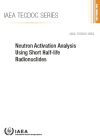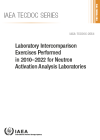Neutron activation analysis is a method for the qualitative and quantitative determination of elements based on the measurement of characteristic radiation from radionuclides formed by irradiating materials by neutrons.
Neutron activation analysis
The technique of neutron activation analysis is based on the measurement of radiation released by the decay of radioactive nuclei formed by neutron irradiation of the material. The most suitable source of neutrons for such an application is usually a research reactor. The samples that can be analysed with this method stem from a number of different fields, including medicine, nutrition, biology, chemistry, forensics, the environment and mining.
Neutron activation analysis can be performed in a variety of ways. This depends on the element and the corresponding radiation levels to be measured, as well as on the nature and the extent of interference from other elements present in the sample. Most of the methods used are non-destructive, based on the detection of gamma radiation emitted by the irradiated material after or during the irradiation.
Next to education and training, neutron activation analysis is the most widely used application of research reactors. Almost any reactor operating at 10-30 kilowatt of thermal power is capable of providing a sufficient neutron flux to irradiate samples for selective applications of this analysis technique.
The costs of setting up a facility for neutron activation analysis, is relatively low compared with the costs of neutron scattering instruments. Since many of the uses of trace element determination (identifying elements in low concentration, for instance used in food and water analysis, medicine etc.) can be directly linked to potential economic benefits, neutron activation analysis is regarded as a key component of most strategic plans for research reactors.








